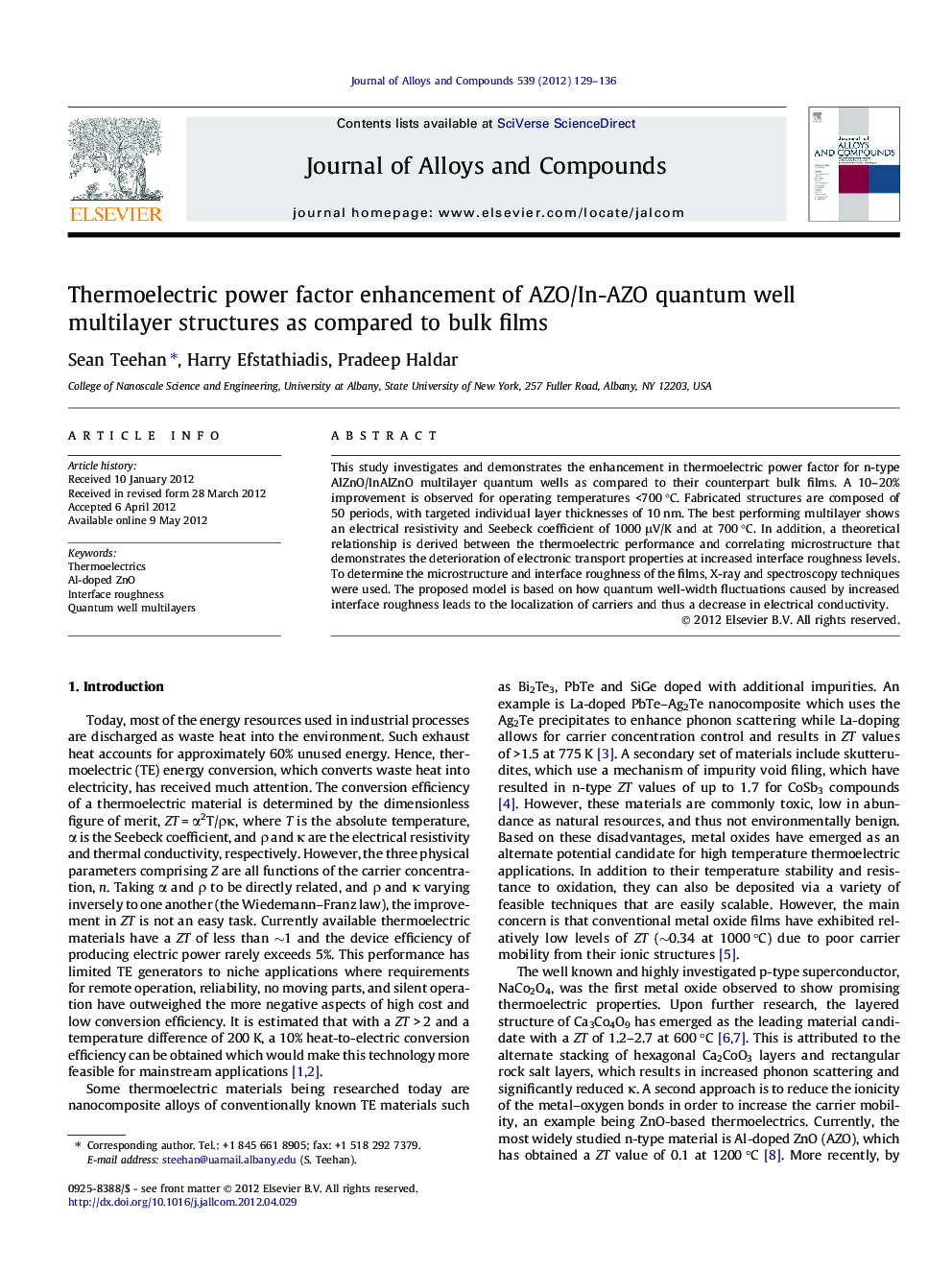| کد مقاله | کد نشریه | سال انتشار | مقاله انگلیسی | نسخه تمام متن |
|---|---|---|---|---|
| 1615708 | 1516354 | 2012 | 8 صفحه PDF | دانلود رایگان |

This study investigates and demonstrates the enhancement in thermoelectric power factor for n-type AlZnO/InAlZnO multilayer quantum wells as compared to their counterpart bulk films. A 10–20% improvement is observed for operating temperatures <700 °C. Fabricated structures are composed of 50 periods, with targeted individual layer thicknesses of 10 nm. The best performing multilayer shows an electrical resistivity and Seebeck coefficient of 1000 μV/K and at 700 °C. In addition, a theoretical relationship is derived between the thermoelectric performance and correlating microstructure that demonstrates the deterioration of electronic transport properties at increased interface roughness levels. To determine the microstructure and interface roughness of the films, X-ray and spectroscopy techniques were used. The proposed model is based on how quantum well-width fluctuations caused by increased interface roughness leads to the localization of carriers and thus a decrease in electrical conductivity.
► Al-doped Zno/(In, Al)-co-doped ZnO quantum wells were deposited via sputtering.
► Multilayers were verified to be poly-crystalline with low interface roughness.
► Quantum well structure reduced electrical resistivity and enhanced Seebeck coeff.
► Thermopower is increased by 3x at 650 K for 2 at.% indium doped quantum wells.
► A model is derived to correlate interface roughness and thermoelectric performance.
Journal: Journal of Alloys and Compounds - Volume 539, 25 October 2012, Pages 129–136